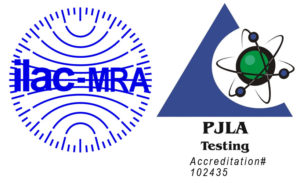The Effective Measurement of Dynamic Internal Compliance of Vascular Grafts
Mock Artery Compliance
by | AAMI 1990 | Publications, Compliance
The Effective Measurement of Dynamic Internal Compliance of Vascular Grafts
25th Annual Meeting of the Association for the Advancement of Medical Instrumentation, Proceedings, 22, (1990)
J. C. Conti, Ph.D., E. R. Strope, Ph.D., D. J. Rohde
Dynatek Laboratories, Inc., Galena, MO
AAMI 1990
Introduction
The clinical importance of matching the compliance of a vascular graft to the host vessel has been a point of contention for many years (ref.). One possible explanation for this unsettled controversy could be that the compliance determinations used to evaluate compliance/patency correlations were improperly performed. Over the past 8 years we have tested all the published techniques with the resulting conclusion that they are all less than ideal.
Techniques designed to determine the compliance of vascular grafts or natural arteries vary from the use of a cantilever arm to optical analysis. All previously available procedures required the adoption of at least one of the following assumptions:
A. External compliance accurately reflects internal compliance and
therefore there is no wall compression.
B. There is no measurable longitudinal compliance.
C. Touching the vessel or graft does not alter the measurement.
D. Dynamic and static compliances are similar in magnitude.
The injected volume dynamic internal compliance technique presented here requires none of these assumptions. It is a straightforward and easy to understand procedure that is accurate and reproducible.
Although in vitro measurements are quite simple, in vivo determinations are still complicated by uncontrolled experimental variables.
Utility of Compliance Measurements
A. Speed of Durability Testing
Since most viscoelastic materials have three dimensional compliances that are a function of speed, it is important to evaluate the highest rate of inflation that a device can experience while still responding with the same geometrical perturbation that would occur at biologically relevant speeds. Most vascular grafts appear to become rigid at inflation rates greater than 1000 per minute. Testing above this initial speed would actually result in less distention per cycle and may understress the sample.
B. Durability Monitoring
By comparing pre- and post-fatigue three dimensional compliance, investigators have an internal standard that they can use to monitor any changes that might develop during high speed durability testing.
C. Biological Protocol
1) In Vivo – Until further refinements are achieved, we believe a true in vivo
compliance determination is not yet available.
2) Although compliance matching will probably be important in the long run,
the aforementioned technical shortcomings render true matching unlikely
at this time.
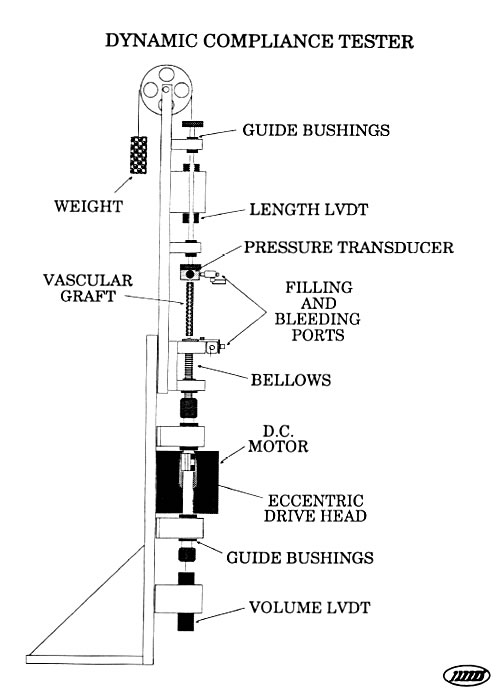
Techniques
Since the results of compliance determinations are related to the degree of stretch that a graft or vessel is experiencing, two easily repeated protocols were designed. The first gradually adjusts the stretching tension until a point is just reached where the graft does not change length during each pulse. The other adjusts the tension until the actual radial compliance is maximized.
Finally, a protocol was designed to allow for the use of inserts when a porous graft is tested.
Approach
An instrument was developed that allows for the pulsatile injection of precisely controlled volumes of experimental fluids into vascular grafts or excised biological vessels while simultaneously monitoring the vessel length and inside pressure. This eliminates all of the assumptions that normally are required during compliance determinations. By evaluating the initial and final volumes of the grafts, the resultant dynamic change in radius can be simply and accurately determined.
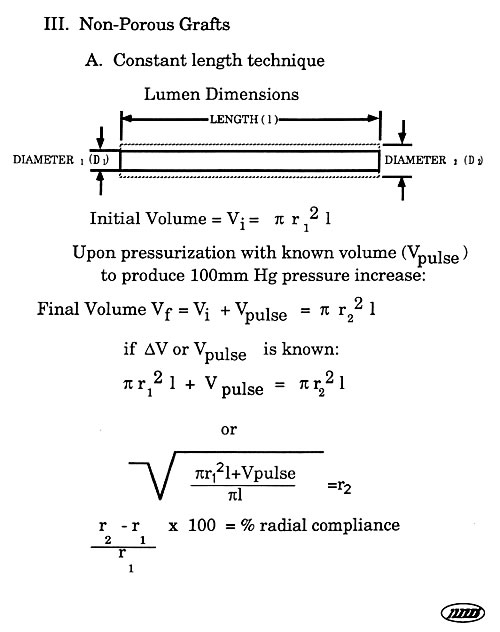
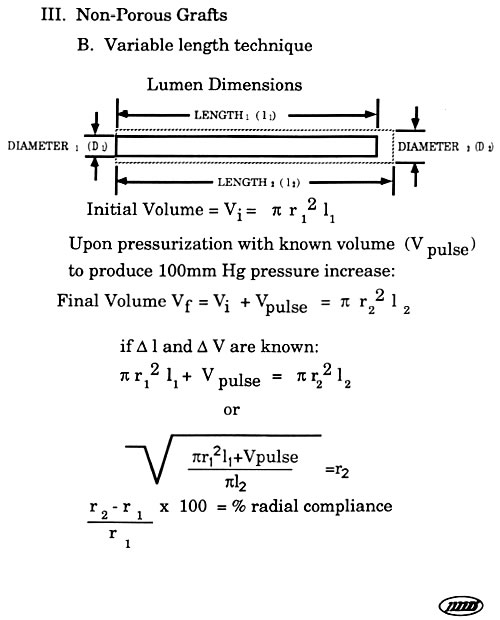
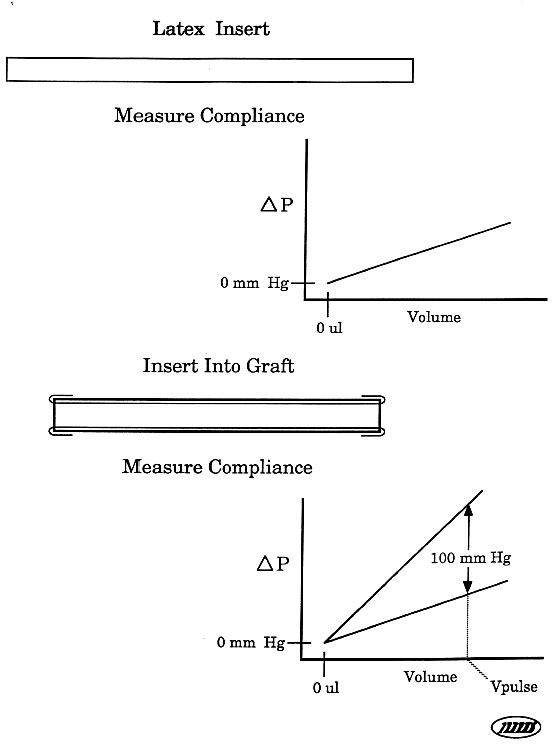
Results of Dynamic Testing
A 4mm polyurethane graft was tested at various speeds between 80 and 120mmHg. The following results indicate a clear dependence of compliance on speed of testing.
Speed (cpm) 1 100 200 400 800 1600 2000
% compliance * 3.33 3.33 3.33 2.85 2.22 1.76
* too much creep to measure.
Summary
The injected volume approach to the determination of dynamic internal compliance is simple, reproducible and highly accurate. It does not require the aforementioned assumptions nor does it utilize complicated mathematics or instrumentation. It does not yet, however, solve many of the problems associated with in vivo determinations necessary for compliance matching. These experimental difficulties are currently being addressed.
References
1. Abbott, W.M., et. al., Effect of Compliance Mismatch on Vascular Graft Patency, J. Vasc. Surg.; 1987 Feb. 5(2) p376- 82.
2. Kidson, I.G., The Effect of Wall Mechanical Properties on Patency of Arterial Grafts., Annals of The Royal College of Surgeons, 1983 Jan. 65(1) p24-9.
3. Lyman, D.J., et. al., Compliance as a Factor Effecting the Patency of a Copolyurethane Vascular Graft., J. Biomed. Mat. Res., 1978 May 12(3) p337-45.
Dynatek Laboratories, Inc., Fourth and Main, PO Box 254, Galena, MO 65656


